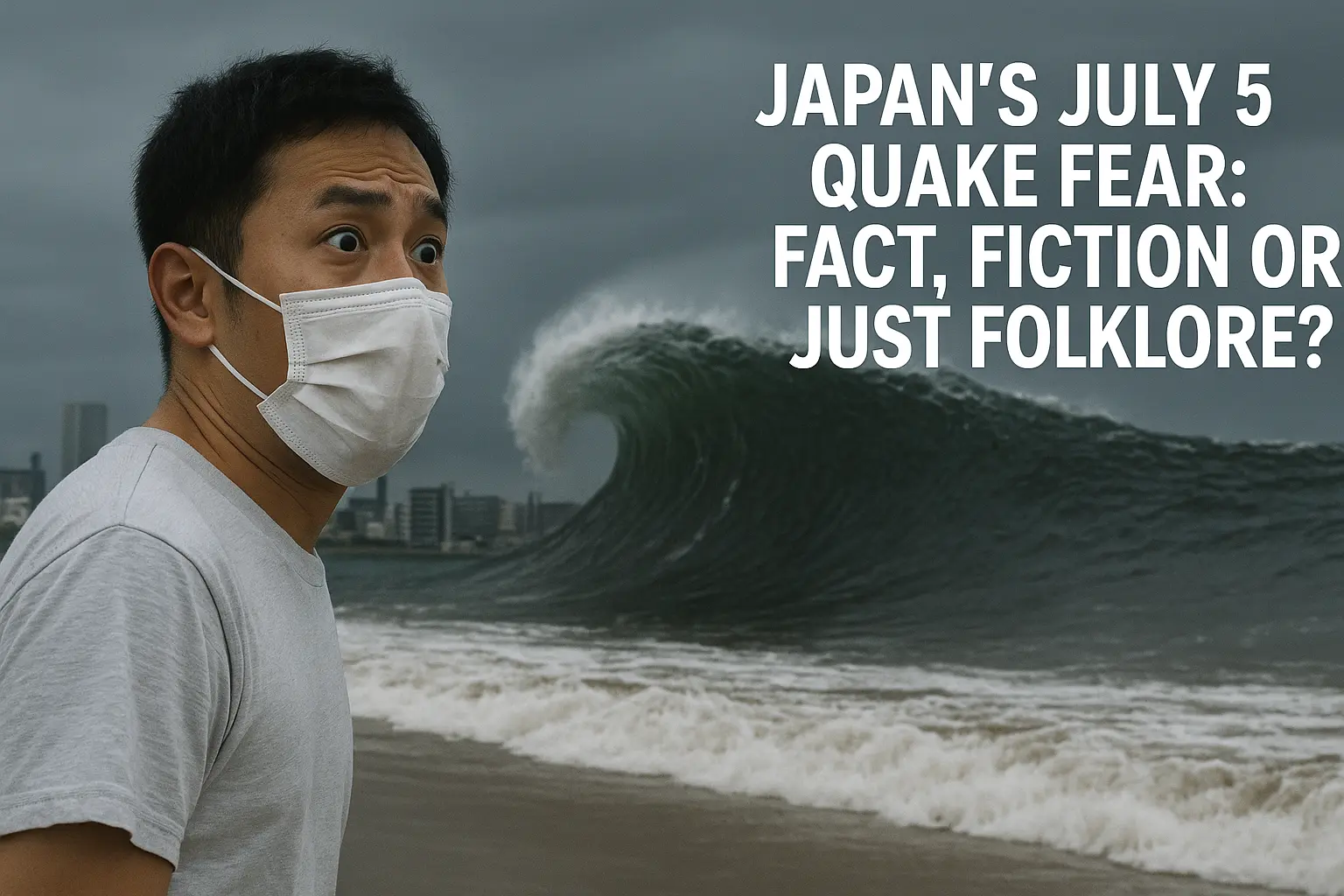Ryo Tatsuki’s manga sparked global panic over a July 5 megaquake in Japan. Here’s what science says and why the world is watching nervously.
Table of Contents
ToggleA Manga’s Prophecy Grips Japan and the World
An eerie prediction from a 1999 Japanese manga has recently triggered global anxiety and disrupted travel plans across Asia. According to the comic artist Ryo Tatsuki, a massive earthquake followed by a tsunami was foreseen for July 5, 2025. While the prophecy may seem like fiction, thousands of people are treating it as a real and imminent threat.
The origin of this panic? A few cryptic lines in Tatsuki’s illustrated diary The Future I Saw, combined with Japan’s real history of seismic disasters and a recent swarm of tremors—has created the perfect storm of fear and speculation.
What Ryo Tatsuki Really Wrote in Her Dream Diary ?
Ryo Tatsuki’s manga is a collection of dream-based predictions she documented between 1985 and the late 1990s. In it, she famously “predicted” the 2011 Tōhoku earthquake and tsunami, writing:
“In the year 2011, in the month of 3, there will be a great disaster.”
The prediction that’s now causing a stir, however, is this:
“The real disaster will come in July 2025.”
Many readers, bloggers, and social media accounts have interpreted this to mean a massive earthquake and tsunami on July 5, even pinpointing 4:18 AM as a potential time. However, Tatsuki herself has stated she is not a prophet and asked people not to overinterpret her dreams.
Is a Megaquake Actually Coming? What Science Says
While Japan sits on one of the most seismically active fault lines in the world, no scientific method exists that can predict the exact time, date, or location of an earthquake. According to Japan’s Meteorological Agency and global experts, the technology doesn’t exist to support these claims.
However, there is one credible concern: the Nankai Trough. This undersea fault off Japan’s southern coast is known for producing megaquakes every 90 to 200 years. A future quake is likely, but the timing remains uncertain.
Real Quakes Stir Real Fear
Adding to the frenzy, Japan has experienced over 1,000 tremors in the past two weeks, particularly around Kyushu and the Tokara Islands. Though most were minor, one earthquake on July 3 measured 5.4 in magnitude, which caused no major damage but did raise eyebrows.
These tremors, while not abnormal for Japan, came at a time when public anxiety was already high, making it easy for people to connect dots—even when science advises caution.
How This Prophecy Is Affecting Travel and Business
Tourism from countries like Hong Kong, Taiwan, and South Korea has taken a hit. Airlines reported booking cancellations for early July, and many travel forums are full of posts from worried tourists unsure if they should visit Japan this week.
According to Reuters, Hong Kong-Japan flights in early July saw an 11–50% drop in passengers compared to the previous month. Japanese tourism boards have since launched campaigns urging travelers not to believe in unfounded rumors.
Why Do People Believe These Predictions?
Here’s a unique angle often missed: why people latch onto these doomsday predictions in the first place.
- Psychological comfort: During uncertain times, people often seek patterns to feel in control—even when those patterns come from comics.
- Social proof: If others are canceling travel and news is spreading, people assume there must be a real threat.
- Historical trauma: The memory of the 2011 disaster runs deep. A prophetic warning that seems accurate rekindles that fear.
Government Response: Stay Alert, Not Afraid
Japan’s government has not issued any earthquake alerts specific to July 5. However, it is always in a state of preparedness for seismic activity. Earthquake drills, tsunami alert systems, and public education campaigns are ongoing.
Officials have advised:
- Use official apps like J-Alert and Yurekuru for real-time earthquake warnings.
- Stay informed via Japan Meteorological Agency and USGS websites.
- Avoid spreading panic via social media and focus on credible sources.













